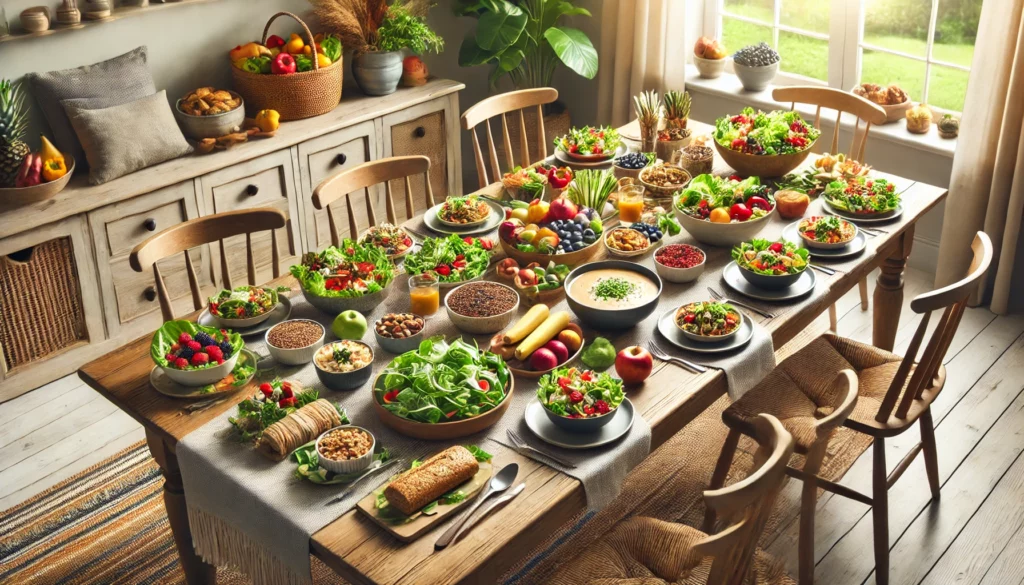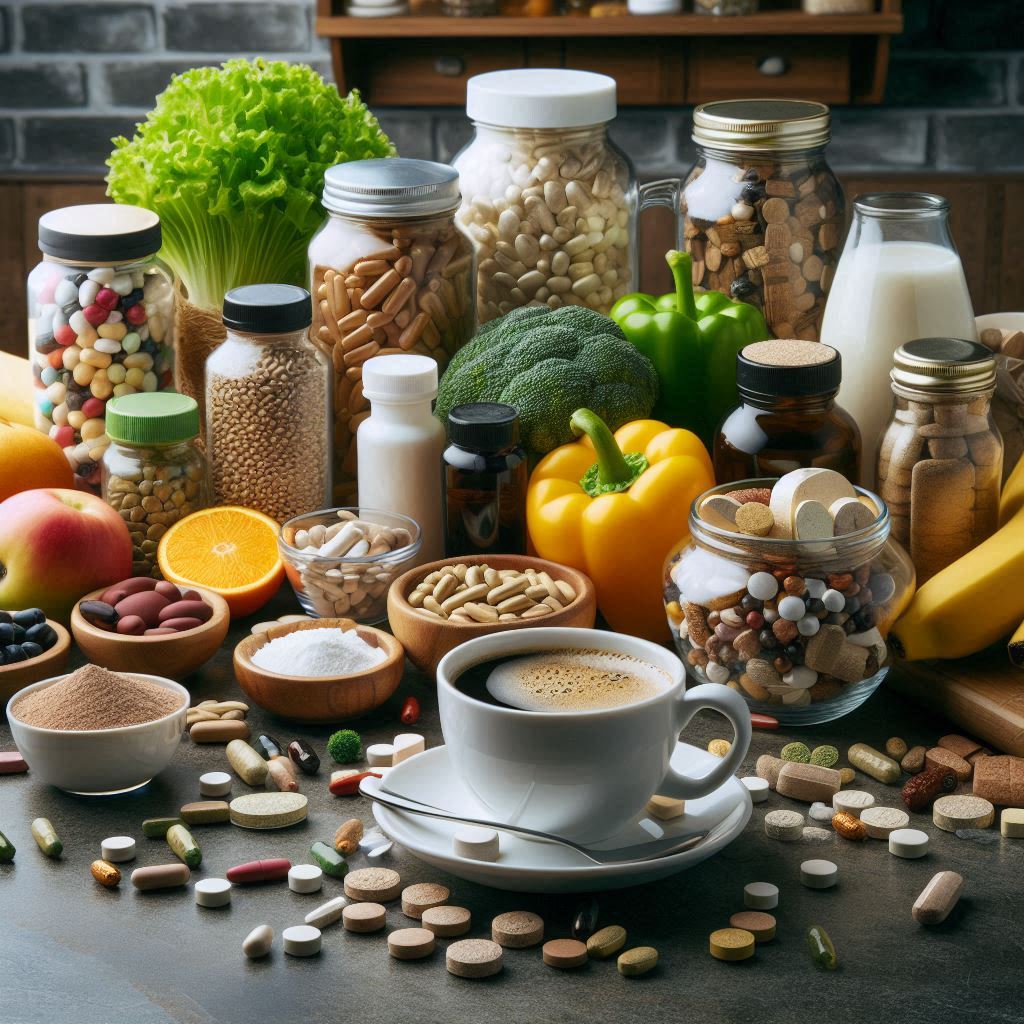Fiber is your buddy when it comes to shedding pounds, especially as you cross into the golden age of 50. It’s the superstar of the nutrition world, showing up in everything from whole grains to fruits and veggies, and it plays a big role in weight management.
When talking fiber, it’s all about soluble and insoluble types. Soluble fiber likes to hang out in places like oats, beans, and apples. It mixes with water to form a gel-like substance, slowing digestion and making you feel full longer. Then there’s insoluble fiber, found in things like whole wheat flour and nuts. This guy acts like a broom, sweeping through your intestines and keeping things moving smoothly.
For folks over 50, fiber isn’t just a nice-to-have, it’s a must-have. It helps you keep your weight in check without going on those crazy diets that leave you hungry. Achieving healthy weight loss isn’t just about cutting calories. It’s about feeling satisfied and not deprived, and fiber is the key to that satisfaction.
Think of fiber as the unsung hero in your quest for health. It not only supports your weight loss goals but also keeps your digestive system humming like a well-oiled machine. So, next time you plan a meal, imagine fiber as your secret weapon in achieving a balanced and lasting lifestyle change.
Boosting Digestive Health and Comfort with Fiber
People over 50 often find that digestive issues start to pop up more than before. It’s not uncommon, but it can be frustrating. Here’s where fiber comes into play as your digestive ally. Fiber is all about keeping things regular and comfy down there.
As we age, our digestive tract can be a bit more sensitive, making constipation and discomfort more frequent disturbances. Fiber helps by adding bulk to waste and speeding up its passage through the digestive system, so you’re not feeling stuck.
Jumping right into a high-fiber diet can lead to unpleasant surprises, like bloating or gas, especially if your system isn’t used to it. Start small. Add fiber gradually to give your body time to adjust. Maybe swap a white bread slice for brown, or toss a few berries onto your morning cereal. These little switches can make a big difference.
It’s also key to remember that to get that fiber magic working well, you need to stay hydrated. When fiber bulks up in your gut, it needs water to do its job smoothly. So, don’t forget to sip on water throughout the day as you up your fiber game!
The Link Between Fiber and Blood Sugar Stability
Keeping your blood sugar on an even keel becomes more crucial as you hit 50 and beyond. It’s not just about avoiding those annoying energy crashes. Maintaining stable blood sugar levels can help keep risks like type 2 diabetes at bay, and fiber is a big player in this game.
Soluble fiber, in particular, is a champ at slowing down sugar absorption in your bloodstream. This means you avoid those sugar spikes and crashes that can lead to cravings. Think of it like a gentle hand on the wheel, steering you smoothly through the day without sudden jerks.
You might be wondering what foods to add for this balance. Oats, beans, and apples aren’t just tasty; they’re packed with soluble fiber that keeps your blood sugar in check. A bowl of oatmeal in the morning or a side of beans with your dinner isn’t just a meal, it’s a step towards steady energy levels.
Cravings can be a pesky hurdle when managing weight. But with the filling power of fiber, particularly soluble types, you’ll feel satisfied longer. When those sugar urges arise, having fiber-rich snacks around can be a real game-changer. A handful of nuts or an apple can help keep those unwanted munchies at bay.
Balancing your meals with these fiber-filled goodies not only supports your weight loss journey but also promotes overall health. It’s about creating a routine that works for you, keeping your energy steady and those cravings under control.
Targeting Visceral Fat with Soluble Fiber
Visceral fat is that sneaky little troublemaker hanging around your abdomen, often becoming more stubborn as we age. It’s not just about appearance; it’s about health. Visceral fat is linked with risks like heart disease and metabolic syndrome, making it crucial to tackle.
Soluble fiber can be your secret weapon in reducing visceral fat. It works by helping your body regulate how it stores fat, which is particularly handy around the belly area. Studies have shown a diet rich in soluble fiber can directly target and help diminish this type of fat.
Incorporating foods like berries, beans, and leafy greens into your diet can be especially effective. Not only are they high in soluble fiber, but they also come packed with nutrients that benefit your overall health.
It’s not just about eating more greens, though. Think about how you can creatively add these foods into your meals. Maybe throw some berries into a salad or add beans to your soups. The key is consistency and making these changes part of your everyday eating habits.
Keep in mind, reducing visceral fat isn’t an overnight fix—it’s about a steady, sustainable approach. Combining a fiber-rich diet with regular physical activity greatly enhances your body’s ability to combat this belly fat and keep your metabolism thriving.

Practical Tips for Adding High-Fiber Foods to Your Diet
Jumping on the fiber bandwagon can seem a bit daunting at first, especially if you haven’t given it much thought before. But easing into it with gentler options suited for aging digestion makes the process a lot friendlier.
Start by focusing on foods that are both nutritious and easier to digest. Steamed vegetables like carrots or broccoli, cooked oats, and soft fruits like bananas or pears can be kinder to your system compared to their raw or tough-skinned counterparts.
Cooking can break down some of the fiber, making it easier on your gut, so don’t hesitate to savor those cooked dishes. Once your body adjusts, you can gradually start incorporating more raw veggies or whole grains into your meals.
Feeling adventurous? Try adding things like chia seeds to your yogurt or blending some spinach into your morning smoothie. These little tweaks can significantly boost your fiber intake without overwhelming your palate or digestion.
Remember, it’s all about balance. Mixing in new fiber-rich foods gradually allows your digestive system to adapt at its own pace. With these practical choices, you can step up your fiber game and keep things moving smoothly.
Integrating Fiber for Joint and Bone Health Benefits
Fiber does more than just keep your weight and gut in check, especially as joints and bones take center stage among health concerns over 50. It turns out many fiber-rich foods are also packed with nutrients that can support joint and bone health.
Leafy greens like kale and spinach aren’t just filled with fiber—they’re loaded with calcium and magnesium, crucial for keeping those bones strong. Legumes, too, bring a healthy dose of antioxidants to the table, helping fight inflammation that might bother older joints.
Adding a mix of fiber and protein in your meals can maintain muscle mass, important for keeping you active and agile. That means pairing your generous serving of greens with some lean protein is not only tasty but also super beneficial for your health.
Think about a salad packed with leafy greens, chickpeas, and some grilled chicken. Or perhaps a hearty stew with lentils and a side of your favorite cooked veggie. These meals can give your body the fiber kick it needs along with nutrients to support your overall vitality.
When planning your meals, weaving in these fiber-rich goodies ensures you’re getting valuable nutrients that go beyond digestion. They’re helping you stay flexible and energetic, making your journey to weight loss smooth and healthy.
Creating a Personalized Fiber-Focused Diet Plan
Each body is unique, especially as we age, so one-size-fits-all doesn’t work when it comes to diet changes. Consulting with a healthcare provider before making significant dietary shifts ensures that your new fiber routine aligns well with your health needs.
It’s not just about eating more fiber but knowing which kinds fit well with any medications or conditions you might have. This is where a personalized approach can really shine.
Some folks might benefit from fiber supplements, but always get the green light from your doctor first, as they can interact with other treatments you’re undergoing.
Crafting a fiber-rich diet tailored to your lifestyle involves understanding what foods keep you satisfied while boosting your health. Consider your personal preferences: love smoothies? Add flax seeds. Into soups? Toss in an extra handful of beans.
Building your meals with this mindset lets you explore a variety of delicious options, making high-fiber eating a joyful part of everyday life. It’s also important to stay tuned to how your body feels with these changes, tweaking your intake as needed to achieve your health goals without discomfort.
This personalized fiber approach not only supports weight loss but also encourages a nurturing relationship with your food, ensuring that the choices you make help you feel your best.


